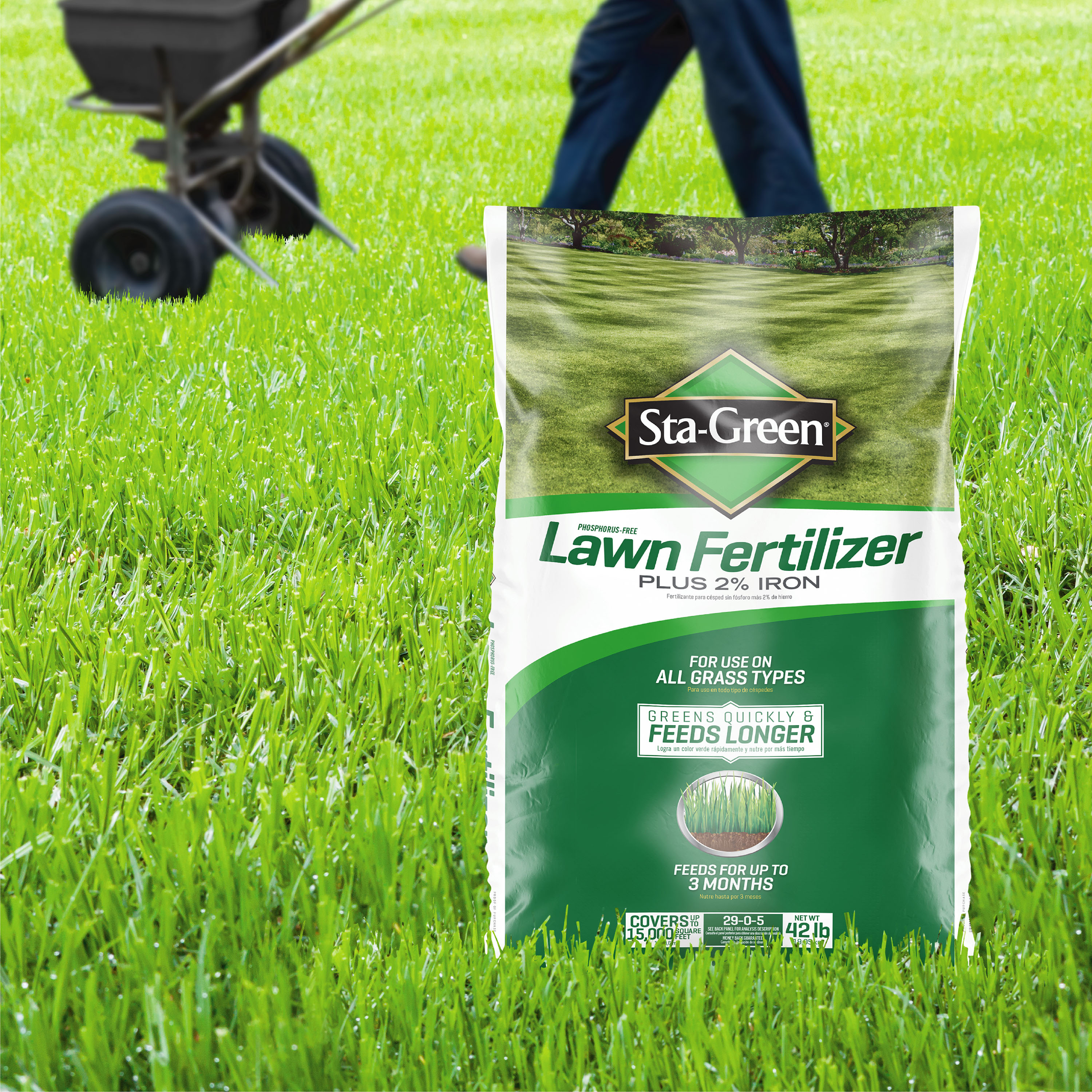

Articles
What The Best Fertilizer For Grass
Modified: January 19, 2024
Discover the best fertilizer for grass in our latest articles. Get expert tips and advice on choosing the right fertilizer to keep your lawn lush and healthy.
(Many of the links in this article redirect to a specific reviewed product. Your purchase of these products through affiliate links helps to generate commission for Storables.com, at no extra cost. Learn more)
Introduction
Welcome to the world of beautiful and lush green lawns! If you are a homeowner or a gardener, you know how important it is to have healthy and vibrant grass. A key component of achieving that vibrant lawn is choosing the right fertilizer.
Grass, like any other plant, requires essential nutrients to grow and thrive. These nutrients are typically found in the soil, but over time, they can become depleted. This is where fertilizers come into play. Fertilizers are specially formulated products that provide your grass with the necessary nutrients it needs to grow strong and healthy.
With so many fertilizers available on the market, it can be overwhelming to choose the right one for your lawn. That’s why we have created this comprehensive guide to help you understand the different types of fertilizers and how to select the best one for your grass.
Before we dive into the specifics of fertilizers, let’s take a moment to understand the needs of grass. Grass, whether it’s a cool-season or warm-season variety, requires three primary nutrients to thrive: nitrogen (N), phosphorus (P), and potassium (K). These nutrients, commonly referred to as NPK, play crucial roles in the growth and development of grass.
Now that we have a basic understanding of the needs of grass, let’s explore the different types of fertilizers available and their specific nutrient compositions.
Key Takeaways:
- Understanding the specific needs of your grass, such as its nutrient requirements, soil composition, and climate, is crucial when selecting the best fertilizer for your lawn. Proper application techniques and sustainable lawn care practices are essential for effective and responsible fertilizer use.
- By considering factors like grass type, soil composition, and environmental impact, and implementing proper fertilizer use techniques, you can achieve a vibrant and healthy lawn. Fertilizers should be part of a holistic lawn care program that includes regular watering, proper mowing, and maintenance practices specific to your grass type.
Read more: What Is The Best Fertilizer For Grass
Understanding the Needs of Grass
Before we delve into the world of fertilizers, it’s essential to understand the specific needs of grass. Grass, like any other plant, requires certain nutrients to grow and flourish. These nutrients play vital roles in supporting root development, promoting leaf growth, and ensuring overall plant health.
The three primary nutrients that grass requires are nitrogen (N), phosphorus (P), and potassium (K). These nutrients are commonly referred to as NPK and are typically listed on fertilizer packaging with corresponding numbers representing the nutrient ratio.
Nitrogen is crucial for stimulating lush green growth in grass. It helps promote the development of healthy foliage, giving your lawn its vibrant and aesthetic appearance. Nitrogen is responsible for increasing leaf blade production, leading to denser and thicker grass coverage.
Phosphorus is essential for root development and overall plant strength. It aids in the establishment of a robust root system, which enhances the grass’s ability to absorb water and nutrients from the soil. Adequate phosphorus levels contribute to improved drought tolerance and better overall resilience.
Potassium, often referred to as potash, plays a crucial role in various physiological processes within the plant. It helps regulate water movement, which aids in drought resistance. Potassium also plays a significant role in disease resistance and overall plant health.
In addition to the NPK nutrients, grass also requires secondary nutrients and micronutrients, albeit in smaller quantities. Secondary nutrients include calcium, magnesium, and sulfur, while micronutrients include iron, manganese, zinc, copper, and others. These nutrients are necessary for optimal growth and development but are typically present in the soil in sufficient amounts.
Understanding the nutritional needs of your grass is essential when selecting a fertilizer. Different grass types may have varying nutrient requirements, so it’s crucial to identify the specific needs of your lawn before choosing a fertilizer. Conducting a soil test can help determine the nutrient deficiencies and pH levels in your soil, enabling you to select the most appropriate fertilizer formulation.
Now that we understand the importance of nitrogen, phosphorus, and potassium, as well as the role of secondary nutrients and micronutrients, let’s explore the different types of fertilizers available to meet these nutrient requirements.
Different Types of Fertilizers
When it comes to fertilizers, there are various options available to suit different lawn care needs. Understanding the different types of fertilizers will help you make an informed choice for your grass. Here are some common types of fertilizers:
- Nitrogen-Rich Fertilizers: Nitrogen is vital for promoting green, leafy growth. Fertilizers with a higher proportion of nitrogen are often used to enhance the color and density of the grass. These types of fertilizers are beneficial for lawns that require a boost in growth, such as those that are patchy or have thin areas.
- Phosphorus-Rich Fertilizers: Phosphorus is important for root development, flowering, and seed production. If your lawn lacks vigor or has poor root growth, a fertilizer with a higher content of phosphorus can help stimulate root development and improve overall plant health.
- Potassium-Rich Fertilizers: Potassium helps improve the overall strength and resilience of grass. Fertilizers high in potassium are beneficial for promoting drought resistance, disease resistance, and overall stress tolerance in the grass. They are especially beneficial in areas with hot and dry climates.
- Organic Fertilizers: Organic fertilizers are derived from natural sources, such as compost, animal manure, and plant materials. They provide a slow-release of nutrients and improve soil health in the long term. Organic fertilizers are an excellent choice for environmentally conscious gardeners and those looking to build healthy soil ecosystems.
- Synthetic Fertilizers: Synthetic or chemical fertilizers are manufactured products that provide a quick-release of nutrients to the grass. They are often more concentrated and offer precise control over nutrient ratios. Synthetic fertilizers are popular for their immediate results and ease of application.
- Slow-Release Fertilizers: Slow-release fertilizers deliver nutrients to the grass gradually over an extended period. These fertilizers are designed to provide consistent nourishment to the grass and reduce the risk of nutrient burn. Slow-release fertilizers are an excellent option for low-maintenance lawns and areas that require a steady supply of nutrients.
Each type of fertilizer has its own advantages and considerations. The choice of fertilizer will depend on the specific needs of your lawn and your personal preferences. It’s important to carefully assess your lawn’s condition, nutrient requirements, and environmental factors to make an informed decision.
Now that we’ve explored the different types of fertilizers, let’s dive deeper into each category to better understand their uses and benefits.
Nitrogen-Rich Fertilizers
Nitrogen is a critical nutrient for grass, as it plays a significant role in promoting lush, green growth. Nitrogen-rich fertilizers are specifically formulated to provide an ample supply of this essential nutrient to the grass. They are commonly used to enhance the color, density, and overall health of the lawn.
There are different types of nitrogen-rich fertilizers available, each with its own characteristics and benefits. Here are some common examples:
- Quick-Release Nitrogen Fertilizers: These fertilizers contain a form of nitrogen that is readily available to the grass. They deliver quick results, providing an instant boost of green growth. Quick-release nitrogen fertilizers are ideal for giving the lawn a rapid visual improvement. However, they require frequent applications to maintain the desired results.
- Synthetic Nitrogen Fertilizers: These fertilizers are chemically formulated and often have a high nitrogen content. They provide a concentrated source of nitrogen that is readily absorbed by the grass. Synthetic nitrogen fertilizers are popular for their precise control over nutrient ratios and immediate results. However, they can be more prone to leaching and can potentially harm the environment if not used responsibly.
- Slow-Release Nitrogen Fertilizers: These fertilizers are designed to release nitrogen gradually over an extended period. They deliver a steady supply of nutrients to the grass, promoting even and sustained growth. Slow-release nitrogen fertilizers are particularly beneficial for lawns that require long-term feeding and reduced risk of nutrient runoff. They are also ideal for low-maintenance lawns as they require less frequent applications.
- Organic Nitrogen Fertilizers: Organic fertilizers derived from natural sources, such as compost or manure, are also rich in nitrogen. They provide a slow-release form of nitrogen that nourishes the grass over time. Organic nitrogen fertilizers not only provide plant nutrients but also improve soil health, enhance microbial activity, and contribute to overall soil fertility.
When using nitrogen-rich fertilizers, it’s essential to follow the application instructions carefully. Applying too much nitrogen can lead to excessive growth, increased susceptibility to diseases, and environmental pollution. It’s advisable to conduct a soil test to determine the existing nitrogen levels and the recommended amount of fertilizer required.
Remember to consider the specific needs of your grass and the environmental factors in your area when choosing a nitrogen-rich fertilizer. Factors such as climate, grass type, and desired growth rate will influence your fertilizer selection.
Now that we’ve covered nitrogen-rich fertilizers, let’s move on to exploring phosphorus-rich fertilizers and their importance in promoting root development and overall plant strength.
Phosphorus-Rich Fertilizers
Phosphorus is an essential nutrient for grass that plays a critical role in promoting root development and overall plant strength. Fertilizers rich in phosphorus are specifically formulated to provide the grass with adequate amounts of this vital nutrient.
Phosphorus-rich fertilizers are particularly beneficial for lawns that exhibit signs of poor root growth, weak establishment, or overall lack of vigor. Here are a few examples of phosphorus-rich fertilizers:
- Superphosphate Fertilizers: Superphosphate fertilizers are highly concentrated sources of phosphorus. They are derived from rock phosphate and undergo a chemical process to make the phosphorus more soluble and readily available to the grass. Superphosphates are commonly used to promote root development, flowering, and overall plant strength.
- Triple Superphosphate Fertilizers: Triple superphosphates contain an even higher concentration of phosphorus compared to regular superphosphates. They are an excellent choice for lawns that require a significant boost in phosphorus levels. Triple superphosphate fertilizers are particularly beneficial for promoting strong root systems, enhancing drought tolerance, and improving overall plant resilience.
- Bone Meal Fertilizers: Bone meal fertilizers are organic sources of phosphorus. They are made from ground-up animal bones and typically contain other beneficial elements like calcium. Bone meal is a slow-release fertilizer that provides a steady supply of phosphorus to the grass. It is suitable for promoting root development, improving nutrient uptake, and enhancing overall plant health.
- Rock Phosphate Fertilizers: Rock phosphate is a naturally occurring mineral that contains high levels of phosphorus. Rock phosphate fertilizers are slow-release and provide a long-term supply of phosphorus to the grass. They are commonly used to improve soil fertility, enhance nutrient availability, and promote healthy root growth.
When using phosphorus-rich fertilizers, it’s crucial to follow the application guidelines provided by the manufacturer. Applying excessive amounts of phosphorus can lead to nutrient imbalances, environmental pollution, and potential harm to aquatic ecosystems.
Remember to assess the specific needs of your lawn and consider factors such as soil type, grass type, and existing nutrient levels when selecting a phosphorus-rich fertilizer. Conducting a soil test can help determine the phosphorus requirements of your lawn and guide you in choosing the appropriate fertilizer formulation.
Now that we’ve explored phosphorus-rich fertilizers, let’s move on to discussing the benefits of potassium-rich fertilizers and their role in promoting overall plant health and stress tolerance.
Read more: What Fertilizer Is Best For Grass
Potassium-Rich Fertilizers
Potassium, also known as potash, is a vital nutrient for grass that plays a crucial role in promoting overall plant health and stress tolerance. Fertilizers rich in potassium are specifically formulated to provide grass with an ample supply of this essential nutrient.
Potassium-rich fertilizers are particularly beneficial for lawns that require improved drought resistance, disease resistance, and overall stress tolerance. Here are a few examples of potassium-rich fertilizers:
- Potassium Chloride Fertilizers: Potassium chloride is one of the most common sources of potassium in fertilizers. It provides a concentrated form of potassium that is readily available to the grass. Potassium chloride fertilizers are beneficial for promoting overall plant vigor, enhancing stress tolerance, and improving water regulation in the grass.
- Potassium Sulfate Fertilizers: Potassium sulfate is another popular source of potassium in fertilizers. It contains both potassium and sulfur, which are beneficial for enhancing plant growth and overall health. Potassium sulfate fertilizers are particularly useful for lawns that require increased potassium levels along with sulfur supplementation.
- Organic Potassium Fertilizers: Organic fertilizers derived from natural sources, such as kelp, seaweed extract, or composted materials, can also provide potassium to the grass. These organic potassium fertilizers not only supply the necessary nutrient but also contribute to improving soil structure, microbial activity, and overall soil fertility.
- Potassium Nitrate Fertilizers: Potassium nitrate is a compound that contains both potassium and nitrogen. It provides a dual source of essential nutrients to the grass. Potassium nitrate fertilizers are beneficial for promoting both plant growth and stress tolerance, making them suitable for lawns that require an all-around nutrient boost.
When using potassium-rich fertilizers, it’s important to follow the recommended application rates to avoid over-application and potential nutrient imbalances. Applying excessive amounts of potassium can lead to detrimental effects on overall nutrient uptake and potentially harm the environment.
Remember to consider the specific needs of your lawn and the environmental factors in your area when selecting a potassium-rich fertilizer. Factors such as climate, soil type, grass type, and existing nutrient levels will influence your fertilizer choice.
Now that we’ve covered potassium-rich fertilizers, let’s move on to exploring the benefits and considerations of organic and synthetic fertilizers to help you make an informed choice for your lawn’s specific needs.
Organic Fertilizers
Organic fertilizers have gained popularity among gardeners and homeowners who prefer a more natural approach to lawn care. These fertilizers are derived from organic sources, such as compost, animal manure, and plant materials. They offer several benefits and are a great choice for those looking to promote healthy soil ecosystems and reduce their environmental impact.
Here are some key points to know about organic fertilizers:
- Natural Nutrient Release: Organic fertilizers provide a slow-release of nutrients to the grass. As they break down, the nutrients are gradually released into the soil, ensuring a steady supply of nourishment over time. This slow-release mechanism helps prevent nutrient leaching and reduces the risk of nutrient runoff, promoting sustainable and environmentally friendly lawn care.
- Soil Health Enhancement: Organic fertilizers not only provide essential nutrients but also improve the overall health of the soil. They enrich the soil with organic matter, which enhances soil structure, moisture retention, and microbial activity. This, in turn, promotes beneficial soil organisms, improves nutrient availability, and creates a favorable environment for healthy root development.
- Reduced Chemical Dependency: By using organic fertilizers, you can reduce dependence on synthetic chemicals and minimize the potential environmental risks associated with chemical fertilizers. Organic fertilizers provide a natural and sustainable alternative that supports long-term soil health and plant growth.
- Environmentally Friendly: Organic fertilizers are generally safer for the environment and pose lower risks to aquatic ecosystems and wildlife. They have minimal detrimental effects on water quality and do not contribute to the buildup of harmful chemicals in the environment.
- Versatility: Organic fertilizers come in various forms, such as compost, well-rotted manure, and organic-based granules or liquids. This provides flexibility in application methods, allowing you to choose the most convenient and effective way to nourish your grass.
It’s important to note that organic fertilizers may have lower nutrient concentrations compared to synthetic fertilizers. They also tend to release nutrients at a slower rate, which may require more frequent applications. However, the long-term benefits to soil health and the overall environmental impact make organic fertilizers an attractive choice for many gardeners.
While organic fertilizers offer numerous advantages, it’s important to consider a few factors when using them. It’s crucial to select high-quality organic fertilizers from reliable sources to ensure that they are free from contaminants or unwanted weed seeds. Additionally, organic fertilizers may have varying nutrient ratios, so it’s important to choose one that meets the specific needs of your grass.
Now that we’ve explored the benefits and considerations of organic fertilizers, let’s move on to discussing synthetic fertilizers and their role in providing quick and targeted nutrient supplementation for your lawn.
Synthetic Fertilizers
Synthetic fertilizers, also known as chemical fertilizers, are manufactured products that provide a quick and targeted supply of nutrients to the grass. These fertilizers are formulated with specific nutrient ratios to address the nutritional needs of the lawn. While they may not offer the same long-term soil benefits as organic fertilizers, synthetic fertilizers offer certain advantages that make them a popular choice.
Here are some key points to know about synthetic fertilizers:
- Precise Nutrient Control: Synthetic fertilizers offer precise control over nutrient ratios, allowing you to tailor the nutrient content to meet the specific needs of your grass. This targeted approach ensures that the grass receives the correct balance of nutrients for optimal growth and health.
- Immediate Nutrient Availability: Synthetic fertilizers provide fast-acting nutrients that are readily available to the grass. They are quickly absorbed by the plants, leading to rapid growth and improvement in the lawn’s appearance. This makes synthetic fertilizers an ideal choice for situations where immediate results are desired.
- Higher Nutrient Concentration: Synthetic fertilizers tend to have higher nutrient concentrations compared to organic fertilizers. This means that smaller quantities of synthetic fertilizers can achieve the desired nutrient levels, making them more cost-effective in some cases.
- Controlled Release Options: Some synthetic fertilizers also offer controlled-release formulations, which allow for slower and more continuous nutrient release. These fertilizers provide a gradual and steady supply of nutrients to the grass, reducing the risk of nutrient leaching and promoting longer-lasting effects.
- Nutrient Specificity: Synthetic fertilizers can be formulated to address specific nutrient deficiencies in the soil. This targeted approach ensures that the grass receives the necessary nutrients without unnecessary supplementation of other nutrients.
While synthetic fertilizers offer these advantages, it’s important to use them responsibly. Over-application of synthetic fertilizers can lead to nutrient runoff, water pollution, and potential harm to the environment. It’s crucial to follow the application instructions provided by the manufacturer and avoid applying more fertilizer than recommended.
When choosing synthetic fertilizers, it’s important to consider the specific needs of your lawn and the environmental factors in your area. Factors such as grass type, climate, soil condition, and existing nutrient levels will influence your choice of synthetic fertilizer.
It’s also worth noting that while synthetic fertilizers provide quick and targeted nutrient supplementation, they may not offer the same long-term benefits to soil health and microbial activity as organic fertilizers. Consider using a combination of synthetic and organic fertilizers to achieve a balanced approach that promotes both immediate results and long-term soil fertility.
Now that we’ve explored synthetic fertilizers, let’s move on to discussing slow-release fertilizers and their benefits in providing consistent and prolonged nutrient availability for your lawn.
The best fertilizer for grass is one that has a balanced ratio of nitrogen, phosphorus, and potassium. Look for a fertilizer with a 3-1-2 or 4-1-2 ratio for healthy grass growth.
Slow-Release Fertilizers
Slow-release fertilizers are specially designed to provide a consistent and prolonged release of nutrients to the grass over an extended period of time. These fertilizers contain nutrients in a form that gradually breaks down, ensuring a steady supply of nourishment to the lawn. Slow-release fertilizers offer several benefits, making them a popular choice for many gardeners.
Here are some key points to know about slow-release fertilizers:
- Even Nutrient Distribution: Slow-release fertilizers are formulated to release nutrients evenly over time. This helps prevent the risk of nutrient burn or excessive growth that can occur with quick-release fertilizers. The gradual release ensures that the grass receives a steady supply of nutrients, promoting balanced and healthy growth.
- Reduced Nutrient Loss: Slow-release fertilizers are designed to minimize nutrient loss through leaching or runoff. The nutrients are released gradually, allowing the grass to absorb them more efficiently and reducing the risk of environmental pollution. This makes slow-release fertilizers an environmentally friendly choice.
- Extended Nutrient Availability: Slow-release fertilizers provide nutrients to the grass over an extended period, ranging from a few weeks to several months, depending on the specific formulation. This means fewer applications are required, saving both time and effort. It also helps maintain a consistent level of nutrient availability in the soil, promoting sustained growth and plant health.
- Reduced Risk of Overfeeding: With slow-release fertilizers, there is a lower risk of overfeeding the grass. The controlled release of nutrients allows for a more balanced nutrient uptake by the grass, reducing the likelihood of nutrient imbalances. This helps prevent excessive growth, potential damage to the lawn, and the need for corrective measures.
- Compatibility with Different Grass Types: Slow-release fertilizers are suitable for a wide range of grass types, including both cool-season and warm-season varieties. Their extended release benefits different grass species, providing them with the necessary nutrients throughout their respective growing seasons.
When using slow-release fertilizers, it’s important to carefully follow the application instructions provided by the manufacturer. Applying more fertilizer than recommended can still lead to nutrient imbalances or other negative effects. It’s advisable to conduct a soil test to determine the existing nutrient levels and select a slow-release fertilizer that matches your grass’s specific requirements.
Slow-release fertilizers can be an excellent option for low-maintenance lawns, areas with water restrictions, or situations where frequent fertilization is impractical. The gradual and consistent release of nutrients supports healthy and sustainable growth, reducing the need for frequent applications.
Now that we’ve explored slow-release fertilizers, let’s move on to discussing the factors to consider when choosing the best fertilizer for your grass.
Read more: What Is The Best Fertilizer Ratio For Grass
Choosing the Best Fertilizer for Your Grass
Choosing the best fertilizer for your grass is an important decision that can have a significant impact on the health and appearance of your lawn. With a variety of fertilizers available, it’s important to consider several factors to make an informed choice. Here are some key considerations when selecting a fertilizer for your grass:
- Grass Type: Different grass types have varying nutrient requirements. Understanding the specific needs of your grass, whether it’s a cool-season or warm-season variety, will guide you in choosing a fertilizer with the appropriate nutrient ratios.
- Nutrient Requirements: Determine the nutrient deficiencies of your lawn by conducting a soil test. The results will provide valuable information about the nutrient levels in your soil, allowing you to select a fertilizer that addresses these deficiencies.
- Fertilizer Type: Consider the different types of fertilizers available, such as nitrogen-rich, phosphorus-rich, potassium-rich, organic, synthetic, and slow-release fertilizers. Evaluate the benefits and limitations of each type and choose one that aligns with your lawn’s specific needs and personal preferences.
- Application Techniques: Consider the ease of application and compatibility with your preferred application methods. Some fertilizers come in granular form, while others are available as liquids or sprays. Choose a fertilizer that suits your convenience and provides effective coverage for your lawn.
- Environmental Impact: Assess the potential environmental impact of the fertilizer you choose. Consider its potential to leach into groundwater or contribute to water pollution. Look for environmentally friendly options that minimize nutrient runoff and prioritize the health of both your lawn and the surrounding ecosystem.
- Timing of Fertilization: Proper timing of fertilizer applications is crucial. Consider the specific requirements of your grass type and regional climate. Generally, it’s advisable to fertilize cool-season grasses in the early spring and fall, while warm-season grasses benefit from fertilization in late spring and throughout the summer.
- Budget and Cost-Effectiveness: Evaluate the cost-effectiveness of the fertilizer in relation to the nutrient content and coverage it offers. Consider the long-term benefits, as well as the potential for reduced applications or additional soil improvement provided by certain types of fertilizers.
By considering these factors, you can select a fertilizer that meets the specific needs of your grass and aligns with your lawn care goals. Remember to follow the application instructions provided by the manufacturer and avoid overuse, as excessive fertilizer can harm the grass and the environment.
Lastly, incorporating proper lawn care practices such as regular mowing, watering, and soil maintenance will complement the effects of the fertilizer and contribute to the overall health and vitality of your lawn.
Now that we’ve explored the factors to consider when choosing a fertilizer, let’s move on to discussing some tips for proper fertilizer use to ensure optimal results for your grass.
Factors to Consider
When selecting a fertilizer for your grass, there are several factors to consider to ensure you make the right choice. These factors will help you determine the specific needs of your lawn and select a fertilizer that will promote healthy growth and vibrant greenery. Here are some key factors to consider:
- Grass Type: Different grass types have unique characteristics and nutrient requirements. Determine whether your lawn consists of cool-season grasses like Kentucky bluegrass or tall fescue, or warm-season grasses like Bermuda grass or Zoysia grass. This will guide you in choosing a fertilizer that matches the specific nutrient needs of your grass type.
- Soil Composition: Assess the composition of your soil, including its pH level and nutrient content. Conduct a soil test to determine any deficiencies or imbalances in the soil. This information will help you select a fertilizer that addresses the specific needs of your soil, ensuring optimal nutrient uptake by the grass.
- Climate: Consider the climate of your region, including temperature and rainfall patterns. Warm-season grasses thrive in hot and humid climates, while cool-season grasses prefer cooler temperatures. Choose a fertilizer that suits the specific requirements of your grass type and climate to promote healthy growth and resilience.
- Current Lawn Condition: Assess the current condition of your lawn. Does it require a boost in growth, more root development, or improved overall health? Identifying any specific issues will help you choose a fertilizer with the appropriate nutrient ratios to address those needs.
- Environmental Impact: Consider the environmental impact of the fertilizer you choose. Some fertilizers contain chemicals that can potentially harm groundwater or aquatic ecosystems. Look for fertilizers that are labeled as environmentally friendly or organic, as they are designed to minimize negative impacts on the environment.
- Application Method: Consider your preferred method of fertilizer application. Fertilizers are available in granular, liquid, or spike forms. Granular fertilizers are commonly spread with a spreader, while liquid fertilizers can be applied using a hose-end sprayer or a watering can. Choose a fertilizer that aligns with your application method of choice.
- Budget: Consider your budget for lawn care. Fertilizers vary in price depending on their nutrient content and quality. Evaluate the cost-effectiveness of different options and choose a fertilizer that provides the best value for your investment.
By considering these factors, you will be able to make an informed decision when selecting a fertilizer for your grass. The right fertilizer will provide the necessary nutrients to promote healthy growth, improve resilience, and enhance the overall appearance of your lawn.
Now that we’ve discussed the factors to consider when choosing a fertilizer, let’s move on to discussing proper application techniques to ensure the effective use of the fertilizer on your lawn.
Application Techniques
The proper application of fertilizer is crucial to ensure that your grass receives the necessary nutrients for healthy growth. Here are some key application techniques to consider when using fertilizer on your lawn:
- Read the Instructions: Before applying any fertilizer, carefully read and follow the instructions provided by the manufacturer. The instructions will provide specific guidelines on the application rate, timing, and any precautions to take.
- Calculate the Application Rate: Determine the correct application rate based on the specific needs of your grass and the nutrient content of the fertilizer. This ensures that you are providing the right amount of nutrients without overdoing it, which can harm the grass and the environment.
- Choose the Right Spreader: If you are using a granular fertilizer, choose a spreader that suits the size of your lawn. Broadcast spreaders are ideal for large areas, while handheld or drop spreaders are more suitable for smaller spaces. Ensure that the spreader is properly calibrated to deliver the fertilizer evenly.
- Apply Evenly: Whether you are using a spreader or applying by hand, it’s important to distribute the fertilizer evenly across the lawn. Overlapping the application pattern slightly can help ensure uniform coverage. This helps prevent uneven growth and reduces the risk of nutrient burn.
- Water After Application: After applying fertilizer, water your lawn lightly to help activate the nutrients and promote their absorption by the grass’s roots. This also helps prevent any fertilizer granules from sitting on the grass blades, which may cause burning or discoloration.
- Avoid Overlapping: Be cautious not to overlap areas with fertilizer during the application process, as this can result in an uneven distribution of nutrients. Overlapping can lead to patchy growth and an imbalance of nutrients across the lawn.
- Maintain a Buffer Zone: When applying fertilizer near water bodies, such as ponds or streams, maintain a buffer zone to prevent nutrient runoff. Avoid spreading fertilizer directly onto impervious surfaces, as this can increase the risk of water pollution.
- Clean Up Excess Fertilizer: After applying the fertilizer, remove any excess granules from sidewalks, driveways, or other non-target areas. This prevents them from being washed into storm drains or bodies of water where they can contribute to water pollution.
By following these application techniques, you can ensure the effective and responsible use of fertilizer on your lawn. This will help optimize the absorption of nutrients by the grass, promote even growth, and minimize the risk of negative impacts on the environment.
Now that we’ve discussed proper application techniques, let’s move on to the timing of fertilizer application for optimal results.
Timing of Fertilization
The timing of fertilizer application is crucial to ensure that your grass receives the nutrients it needs at the right time for optimal growth and health. Understanding the appropriate timing for fertilization will help maximize the benefits and promote the overall well-being of your lawn. Here are some key considerations for timing your fertilizer application:
- Season: Fertilizer application should be tailored to the specific growing season of your grass type. Cool-season grasses, such as Kentucky bluegrass and tall fescue, have their peak growth in the spring and fall. Warm-season grasses, like Bermuda grass and Zoysia grass, thrive during the summer months. Apply fertilizer at the beginning of each respective growing season to provide the necessary nutrients for sustained growth.
- Soil Temperature: Monitor the soil temperature to determine the appropriate timing for fertilizer application. It is generally recommended to apply fertilizer when the soil temperature reaches around 55 to 65°F (12 to 18°C) for cool-season grasses. For warm-season grasses, wait until the soil temperature reaches about 65 to 70°F (18 to 21°C) for optimal nutrient uptake.
- Growth Stage: Consider the growth stage of your grass when timing fertilizer application. Apply fertilizer when the grass is actively growing and can readily absorb and utilize the nutrients. Avoid fertilizing dormant grass as it will not effectively take up the nutrients and may lead to nutrient runoff or wastage.
- Upcoming Rainfall: Plan your fertilizer application when rainfall is expected within the next day or two. Rainfall helps water in the fertilizer and facilitates nutrient absorption by the grass. Avoid applying fertilizer before heavy rainfall, as it may wash away the nutrients before they can be absorbed.
- Avoid Summer Heat Stress: During periods of extreme heat and drought stress, it is best to avoid fertilizing warm-season grasses. Fertilizer application during these times can potentially damage the grass and increase the risk of nutrient burn. Instead, focus on proper watering and maintenance practices to support the grass’s resilience.
- Follow Local Guidelines: Consider any local regulations or guidelines regarding fertilizer use in your area. Some regions may have specific restrictions or recommendations to prevent nutrient runoff and water pollution. Familiarize yourself with these guidelines and follow them to ensure responsible lawn care practices.
By carefully timing your fertilizer application, you can provide your grass with the nutrients it needs during its most active growth periods. This promotes healthy growth, deep root development, and enhanced overall resilience of your lawn.
Now that we’ve discussed the timing of fertilizer application, let’s move on to some tips for proper fertilizer use that will help you achieve optimal results for your grass.
Tips for Proper Fertilizer Use
Proper fertilizer use is essential to ensure that your grass receives the right nutrients in the right amounts for optimal growth and health. By following these tips, you can maximize the effectiveness of fertilizers and promote the overall well-being of your lawn:
- Soil Testing: Conduct a soil test to determine the nutrient deficiencies and pH levels in your soil. This will guide you in selecting the appropriate fertilizer formulation and application rates to address specific nutrient requirements.
- Follow Fertilizer Instructions: Read and follow the instructions provided by the fertilizer manufacturer. Pay attention to the recommended application rates, timing, and any precautions to take. Applying more fertilizer than recommended can lead to nutrient imbalances and potential harm to your lawn and the environment.
- Choose the Right Fertilizer: Select a fertilizer that matches the specific needs of your grass type, considering factors such as nutrient ratios, slow-release properties, and environmental considerations. Matching the fertilizer to your lawn’s requirements is key to promoting healthy growth and avoiding excessive nutrient runoff.
- Proper Application Techniques: Apply the fertilizer evenly and at the recommended rates. Use the appropriate equipment, such as spreaders or sprayers, to ensure uniform coverage. Avoid overlapping and spreading fertilizer on non-target areas or impervious surfaces to prevent environmental pollution.
- Watering: Water your lawn after fertilizer application to activate the nutrients and facilitate their absorption by the grass’s roots. This will also help prevent any fertilizer granules from sitting on the grass blades, which can cause burning or discoloration.
- Maintain Proper Mowing Heights: Regularly mow your lawn at the recommended height for your grass type. Proper mowing promotes air circulation, sunlight penetration, and overall grass health. Avoid removing more than one-third of the grass blade height in a single mowing to prevent stress on the grass.
- Practice Regular Lawn Care: Fertilizer is a supplemental treatment, and it should be used in conjunction with other essential lawn care practices. Practice regular watering, appropriate mowing techniques, and proper maintenance to support the overall health and well-being of your lawn.
- Store Fertilizers Properly: Follow the storage instructions provided by the manufacturer to ensure the longevity and effectiveness of your fertilizers. Store them in a cool, dry place, away from children or pets, and preferably in their original packaging.
By following these tips, you can ensure the proper use of fertilizers and promote the health and vitality of your lawn. Remember that maintaining a healthy lawn involves a combination of essential lawn care practices, with fertilizer being just one piece of the puzzle.
Now that we’ve explored the tips for proper fertilizer use, it’s time to wrap up our comprehensive guide. By considering the factors discussed and implementing proper fertilizer use techniques, you can achieve a vibrant and healthy lawn that enhances the beauty of your outdoor space.
Happy fertilizing!
Conclusion
Having a lush and vibrant lawn is a goal that many homeowners and gardeners strive to achieve. The key to maintaining a healthy and beautiful lawn lies in choosing the best fertilizer for your grass. Throughout this comprehensive guide, we have explored the various factors to consider and provided valuable information on different types of fertilizers, their nutrient compositions, and their benefits.
Understanding the specific needs of your grass, including its nutrient requirements, soil composition, climate, and growth patterns, is essential when selecting a fertilizer. Whether you choose a nitrogen-rich fertilizer for lush green growth, a phosphorus-rich fertilizer for root development, a potassium-rich fertilizer for overall plant health, or opt for organic or synthetic options, considering these factors will guide you toward choosing the best fertilizer for your lawn.
Proper application techniques, including applying the fertilizer evenly, following recommended rates, and paying attention to timing and watering, are also vital for effective results. Additionally, following sustainable lawn care practices and considering the environmental impact of fertilizers are important steps towards responsible and eco-friendly lawn care.
Remember, fertilizers should not be used as a standalone solution. They should be part of a holistic lawn care program that includes regular watering, proper mowing techniques, and maintenance practices specific to your grass type. By combining these efforts, you can create an environment that nurtures healthy, resilient grass and maintains the long-term health of your lawn.
We hope that this guide has provided you with valuable insights into the world of fertilizers and has empowered you to make informed decisions regarding your lawn care. By understanding the needs of your grass, choosing the right fertilizers, and implementing proper fertilizer use techniques, you are well on your way to achieving the green, healthy lawn you desire.
Remember to enjoy the process of nurturing your lawn and take pride in the results. A well-cared-for lawn not only enhances the beauty of your property but also provides a welcoming space for you, your family, and your friends to enjoy outdoor activities and create lasting memories.
Happy fertilizing, and here’s to a beautiful and thriving lawn!
Frequently Asked Questions about What The Best Fertilizer For Grass
Was this page helpful?
At Storables.com, we guarantee accurate and reliable information. Our content, validated by Expert Board Contributors, is crafted following stringent Editorial Policies. We're committed to providing you with well-researched, expert-backed insights for all your informational needs.
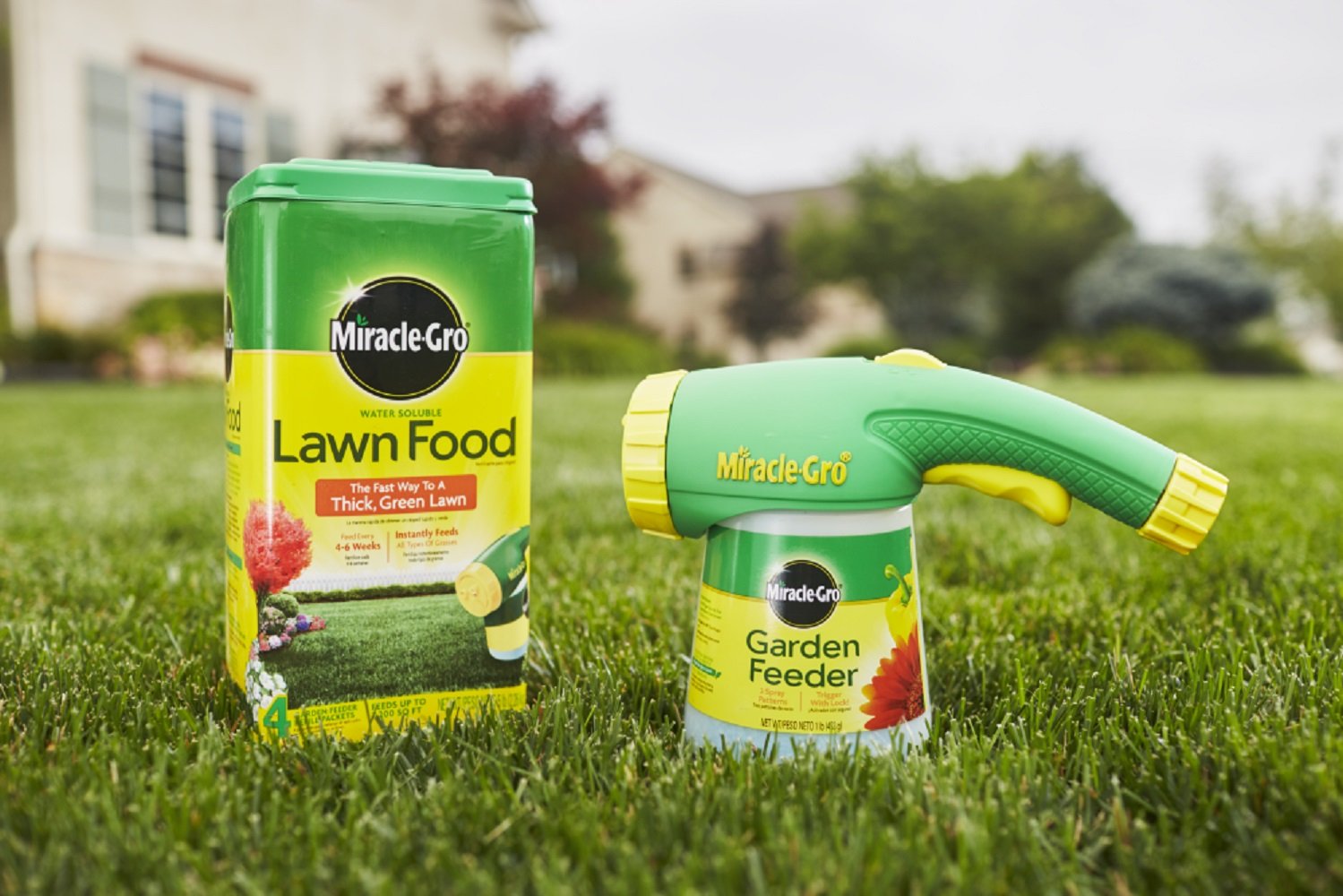
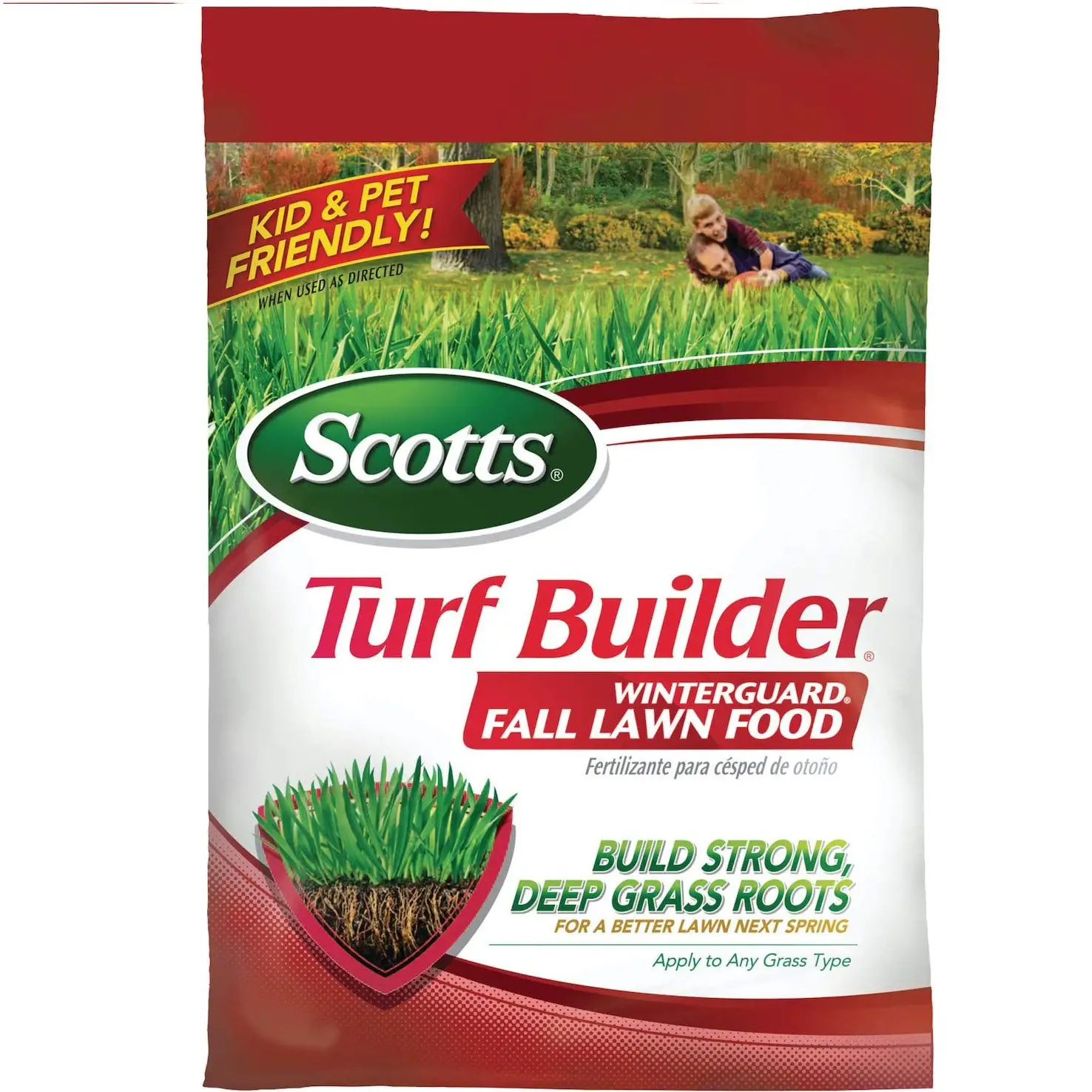
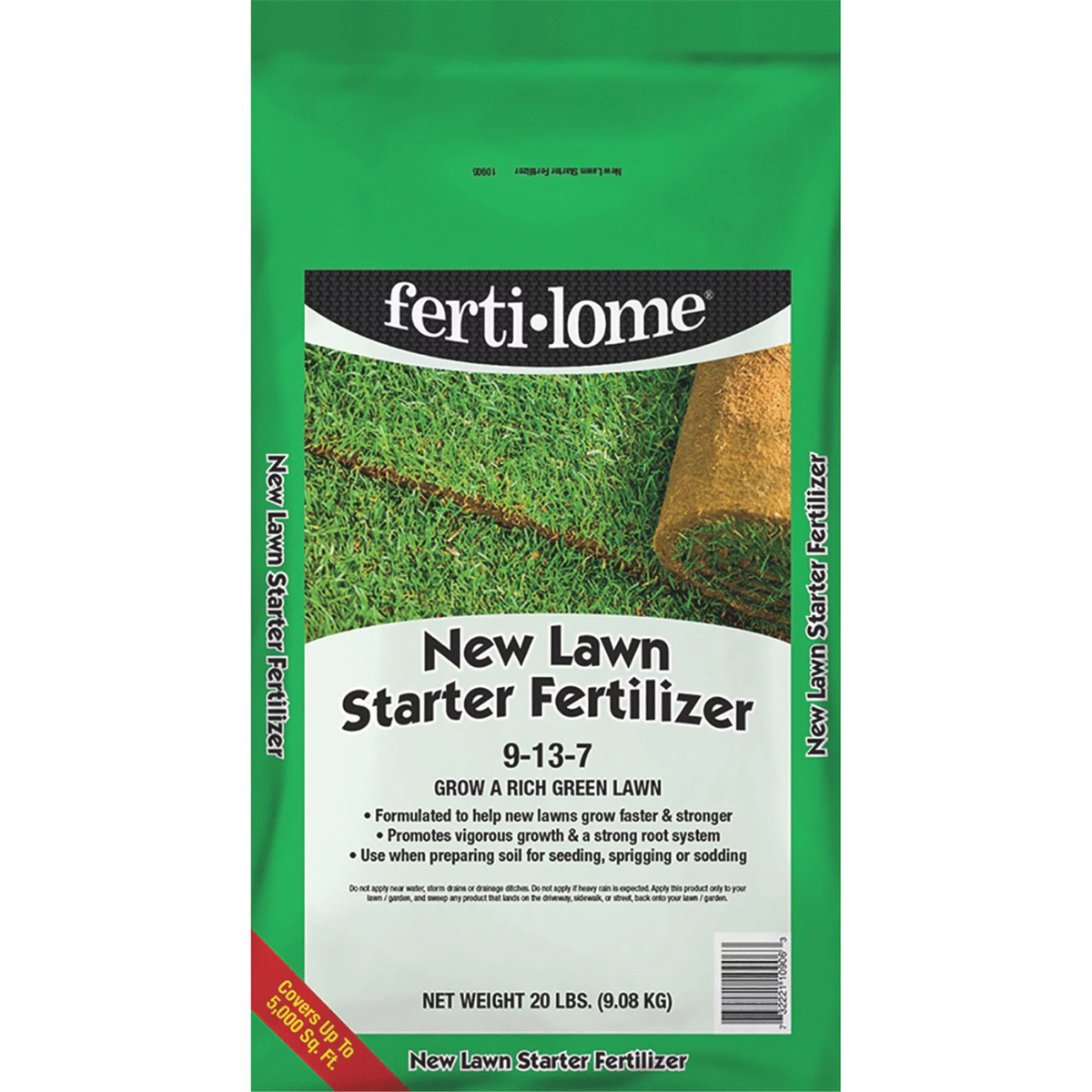

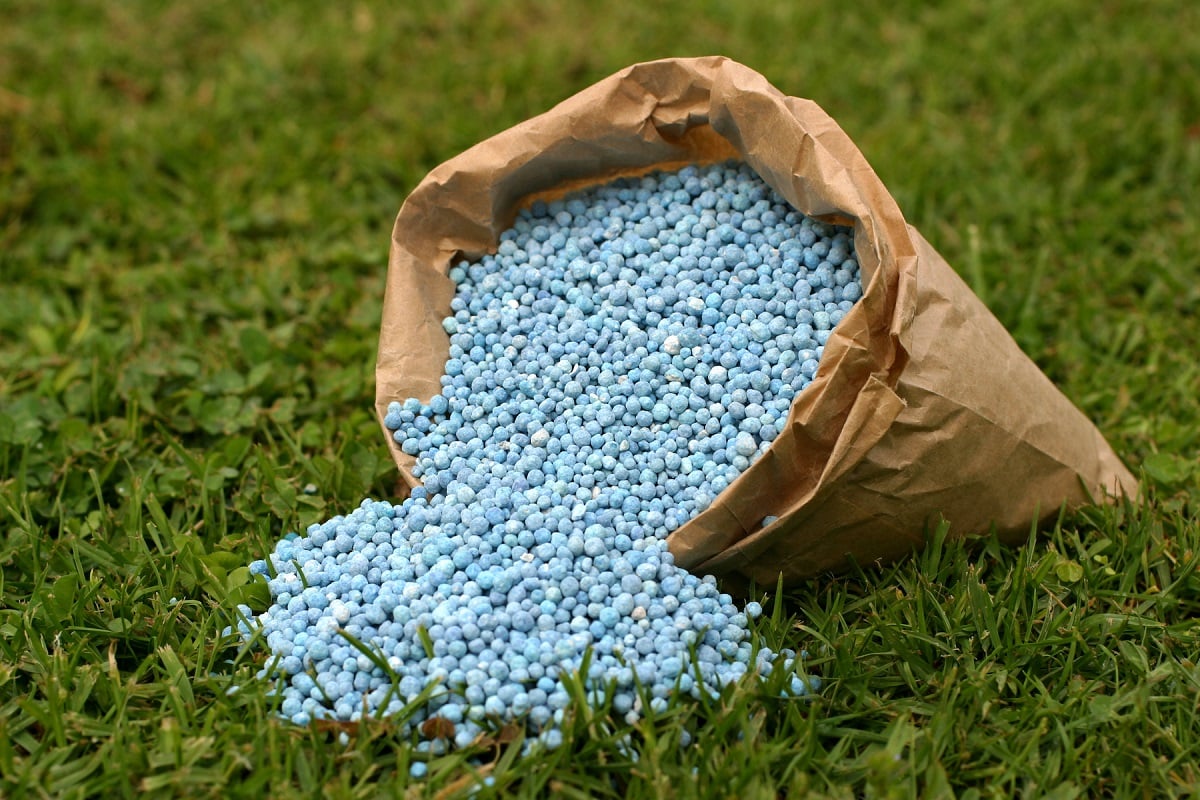
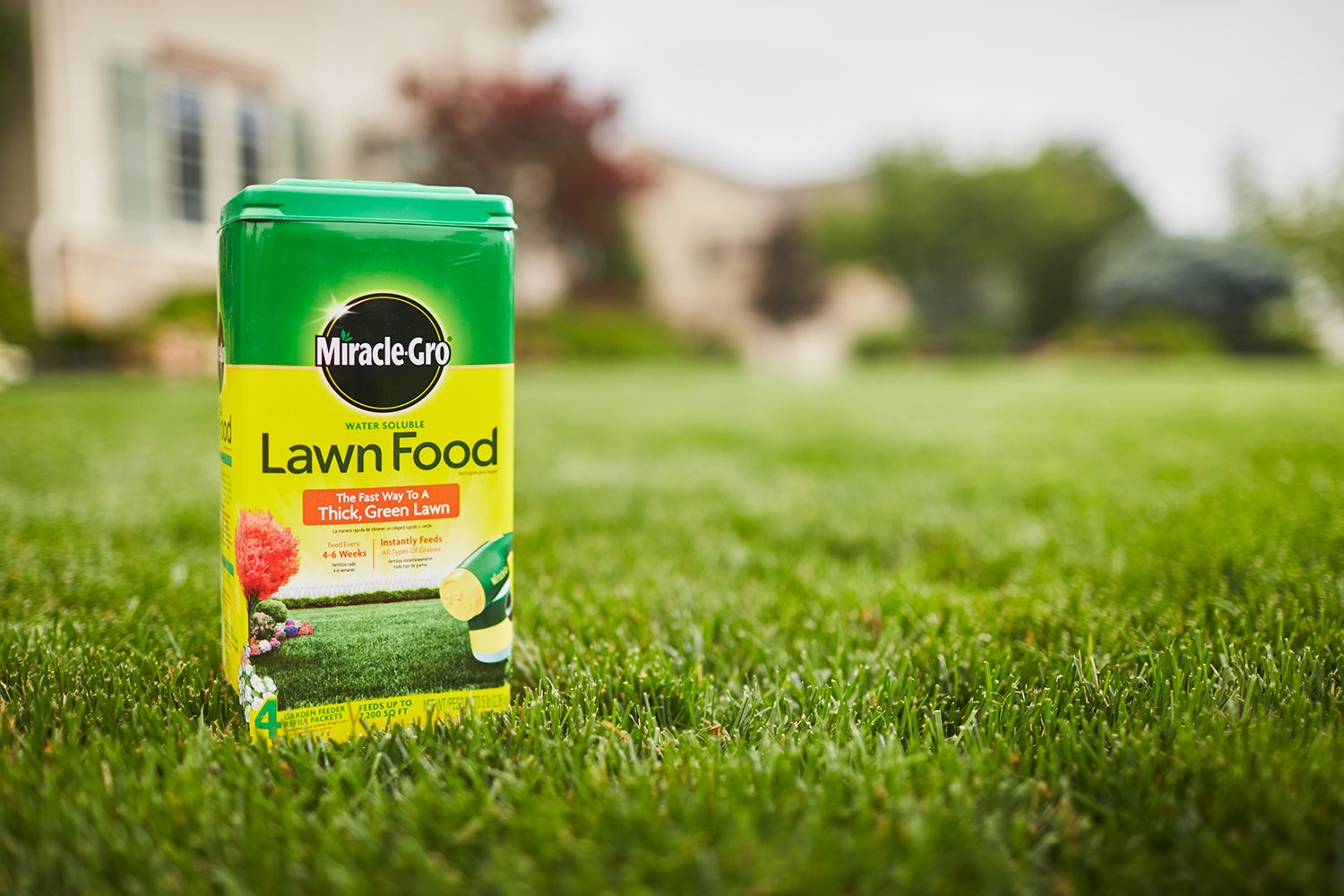
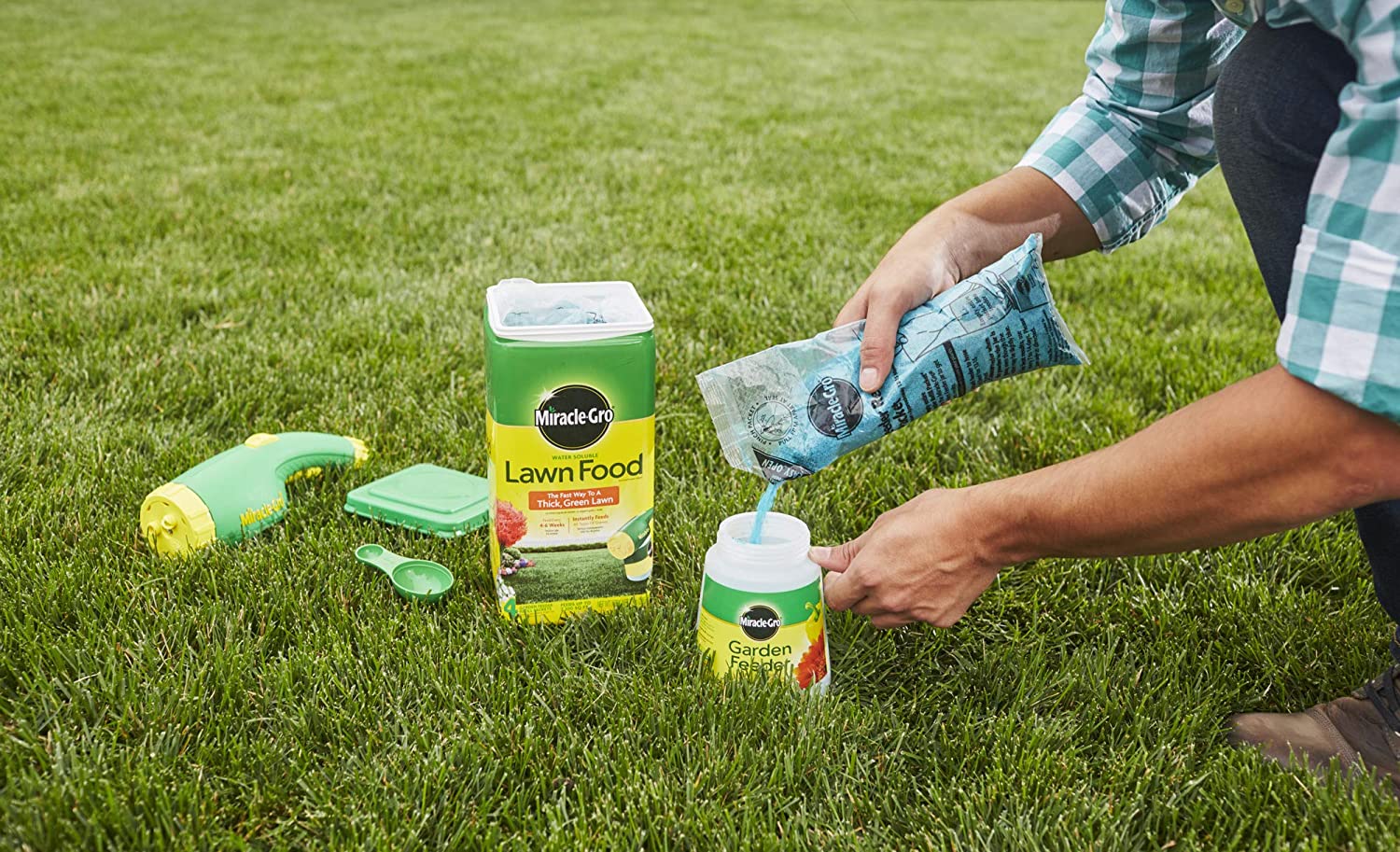
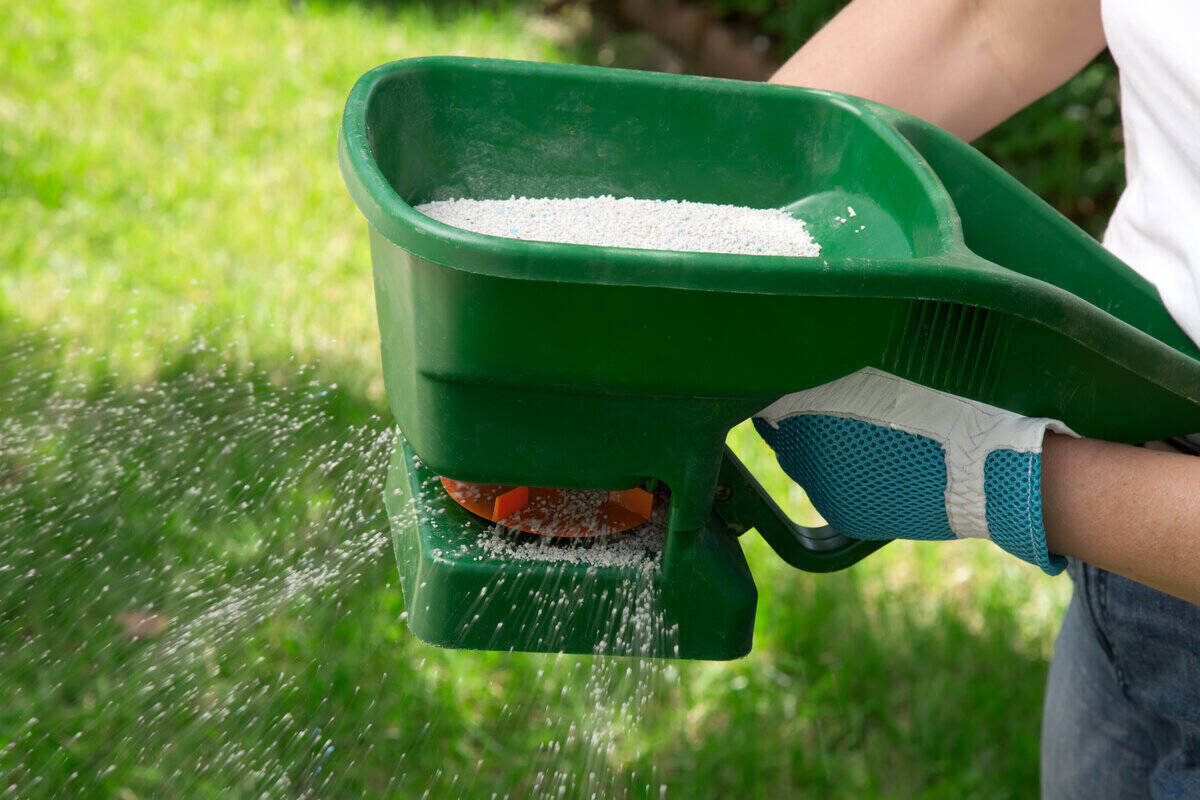
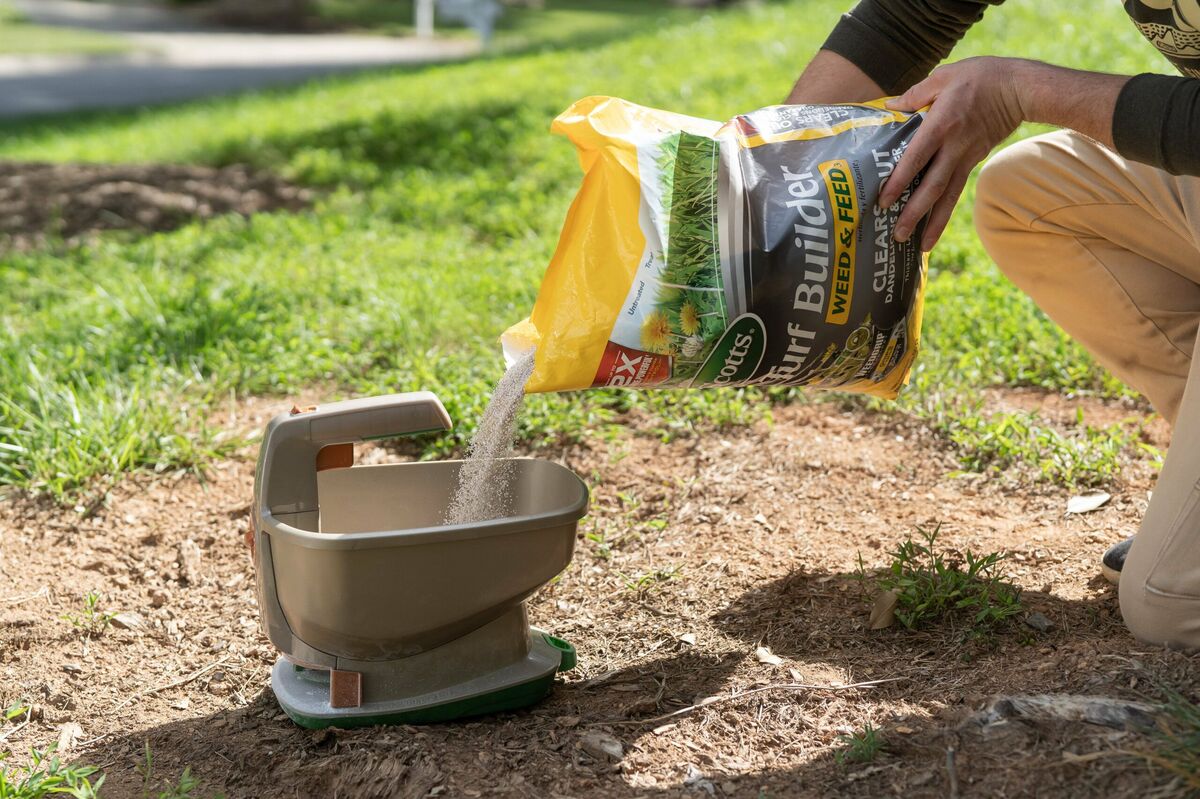
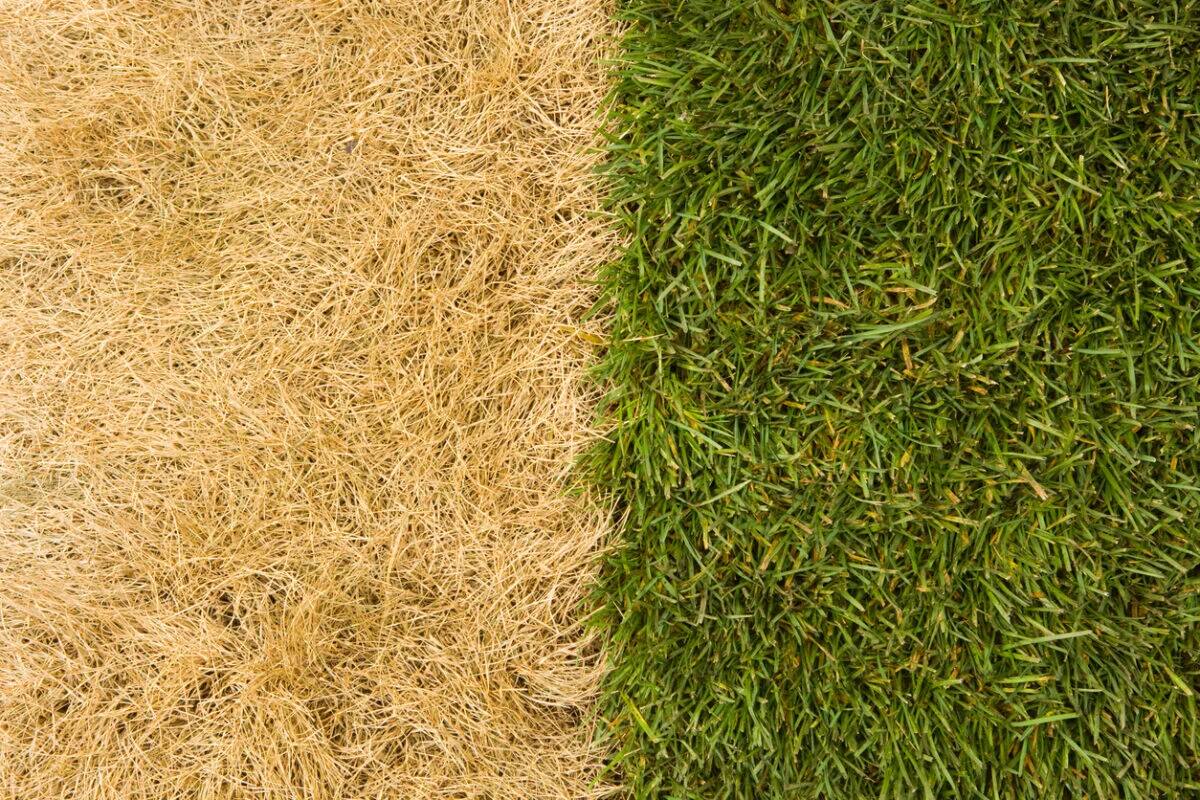

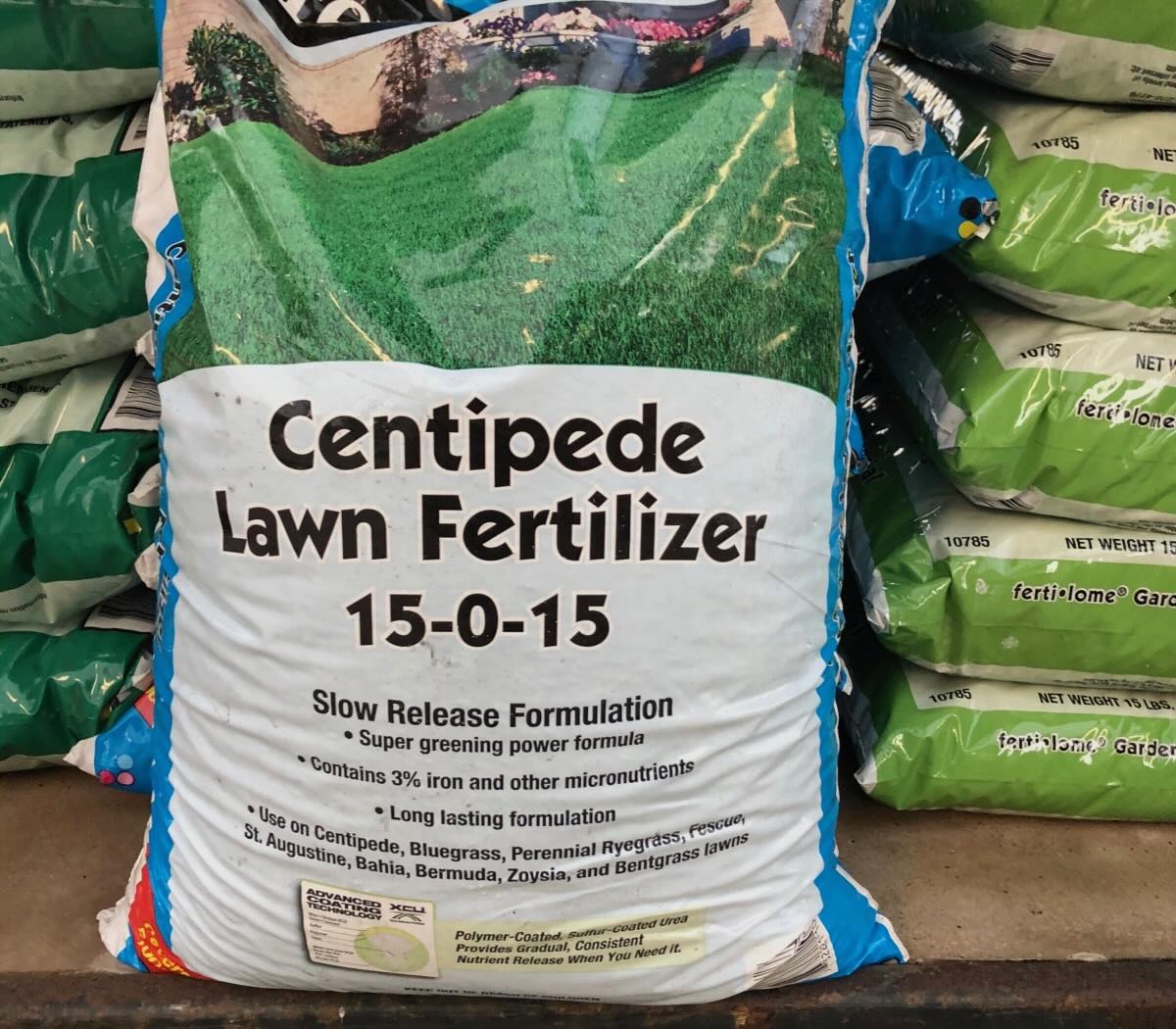

0 thoughts on “What The Best Fertilizer For Grass”